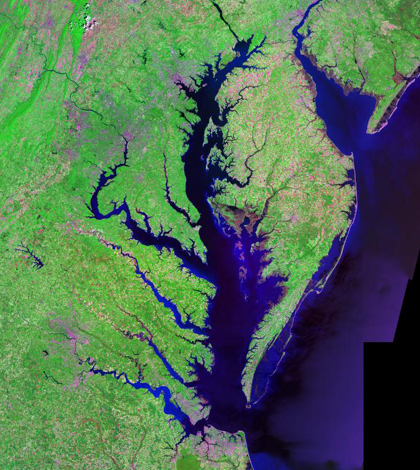USGS hydrologists discover ancient seawater under Chesapeake Bay

An aerial view of Chesapeake and Delaware bays from the Landsat satellite (Credit: USGS, vis Wikimedia Commons)
Researchers from the U.S. Geological Survey have discovered one of the largest bodies of ancient seawater in the world, according to the Japan Times. The pocket was discovered in southern Virginia, several hundred meters underground near Chesapeake Bay.
The water deposit was lodged underground after a collision made by an asteroid or other space rock impacted the area around 35 million years ago. The collision left super-saline, cretaceous period seawater.
USGS hydrologists confirmed that the water was from ancient times because of its high salinity. The water’s chemistry analysis also revealed high levels of chloride and bromide, characteristic of water during the cretaceous time period.
Image: An aerial view of Chesapeake Bay from the Landsat satellite (Credit: USGS, vis Wikimedia Commons)





0 comments